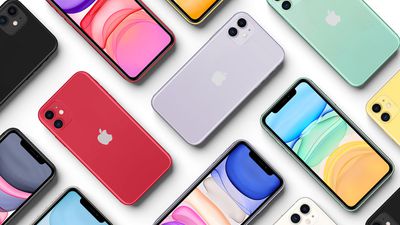The United States Federal Communications Commission today cleared the way for OnGo [PDF], a wireless product spearheaded by the Citizens Broadcast Radio Service Alliance (CBRS) that aims to use the 3.5GHz band for a range of applications, including improving data speeds and connectivity across the United States on both 4G and 5G networks.
The CBRS Alliance announced that the FCC has allowed the Full Commercial Deployment of the OnGo service, which has been in the works since 2013 when the FCC first began pursuing a shared spectrum model for the 3.5GHz band.

Many major companies and government agencies came together as part of the CBRS Alliance to launch OnGo, including AT&T, Ericsson, Intel, Nokia, Samsung, Qualcomm, the FCC, the NTIA, the Department of Defense, and more, with the alliance boasting more than 159 members in total.
The 3.5GHz CBRS band will allow for new 4G and 5G operations, which the National Telecommunications and Information Administration says will create "tremendous value" for the United States by opening up capacity and coverage for 4G networks and facilitating the rollout of 5G.
Prior to the opening up of the 3.5GHz spectrum for commercial uses, it was used by the Department of Defense for shipborne radar systems. Environmental Sensing Capability (ESC) networks built along the coast will reserve spectrum for ship radar systems, dynamically reassigning standard users to other parts of the band.
FCC Chairman Ajit Pai said that the 3.5GHz band will benefit both consumers and businesses through agreements with CommScope, Federated Wireless, Google, and Sony who are now fully approved to operate commercial services in the band.
The FCC has made it a priority to free up mid-band spectrum for advanced wireless services like 5G. And today, I'm pleased to announce the latest step to achieve that priority: the approval of four systems that will enable the 3.5 GHz band to be put to use for the benefit of American consumers and businesses. As with all of our efforts to execute on the 5G FAST plan, we're pushing to get next-generation wireless services deployed in the 3.5 GHz band as quickly and efficiently as possible.
OnGo is the name that the CBRS Alliance is using for the 3.5GHz spectrum. The CBRS Alliance says that OnGo empowers new business opportunities in workplaces, in public spaces where consumers will be able to use the spectrum, and for machine-to-machine communications or sensors for enabling a smarter infrastructure.
In simpler terms, OnGo facilitates private LTE networks, offers better performance than Wi-Fi, provides spectrum without cost that can be used for a multitude of purposes, allows wireless carriers to add coverage and capacity and improve data, and it boosts IoT connectivity in the longer-range level currently limited to Low-Power Wide Area Networks.
Apple's newest iPhones, including the iPhone 11, 11 Pro, and 11 Pro Max, already support OnGo, or CBRS Band 48, and iPhone users could be seeing OnGo benefits in the near future. Verizon, for example, is a customer of Federated Wireless, one of the companies authorized to use the spectrum. Federated Wireless has already said that it plans to initiate CBRS services for more than 20 of its major customers in both urban and rural markets.
Along with the iPhone, other major smartphones also work with CBRS Band 48, including Samsung's Galaxy S10 devices and Google's Pixel 4 smartphones.























